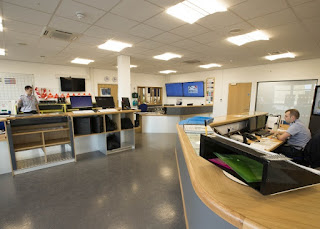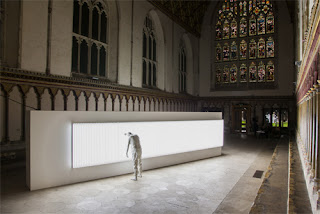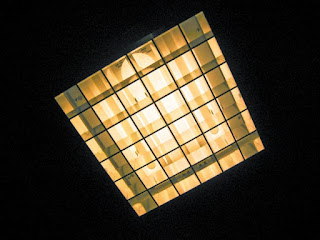TAG | led tubes
27
LED helps to make RAF more environmentally friendly
Comments off · Posted by admin in LED, LED panels
Despite facing severe budget restraints, a project has been delivered that is both energy efficient and sustainable and the RAF’s decision to use LED lighting, for one of first times on a new project, played an important role.
The building has been so well received within the defence community that it has been awarded the Ministry of Defence’s prestigious Sanctuary Award for Sustainability.
RAF Lossiemouth often bears the brunt of the West’s increasingly fractious relationship with Russia, with RAF Typhoon fighters being dispatched from the base on a regular basis to intercept Russian aircraft, which often play cat and mouse with Britain’s air defences. This means the base is constantly in use.
Sustainability was put at the heart of the project and energy efficiency was key. The new building and the refurbishment of the older buildings also had to be completed in a robust fashion, so as to ensure long, low-cost use.
In order achieve these aims, LED was quickly considered and pitched.
‘There were a number compelling reasons to change the lighting in the older facilities, principally because the buildings involved are used by the squadron 24 hours a day. But like any project that involves spending public money, it had to be justified,’ commented senior project manager at the Defence Infrastructure Organisation, Jim Ellistone , who worked on the project.
The new building would have a number of uses, requiring different levels of lighting. Besides the executive and administrative offices, the new headquarters building would provide a state of the art secure facility that would be used to plan and brief complex flying operations.
The building would also accommodates the Squadron’s engineering and logistics facilities and the Survival Equipment Section, which maintains all of the high tech equipment worn by Typhoon pilots during flight.
‘Everyone involved in the process quickly recognised the benefits of new lighting, the figures showed that, due to energy savings, the project would pay for itself in just over four years,’ Ellistone added.
In defence projects, the cheapest capital option is often used, due to the budget constraints that the MoD is placed under by the government of the day, however the benefits of LED were quickly provable to authorities.
‘This was an easy change to sell and was, in many ways, like pushing on an open door. The benefits of LED are now well established and we knew that a case for the technology had to be put forward at the first planning stage,’ Ellistone commented.
The highly intricate work that RAF engineers have to carry out on the Typhoon fighters, which are some of the RAF’s newest and most agile aircraft, means that excellent light quality is required. Such is the 24-hour nature of the base, repairs could be needed any time during the the day and night.
The aircraft are stored under concrete Cold War era Hardened Aircraft Shelters (HAS), which had not been internally upgraded since the days of Ronald Reagan and Mikhail Gorbachev. Energy efficient LEDs, offering the necessary light levels were installed as replacements to older models. LEDs were also used in the lines on the base’s concrete floor, which the aircraft use as guidance when they pull forward.
‘We had to be careful when specifying fixtures for the HAS, when the jet engines run in the hangers, fumes come from the wings and rise upwards,’ Ellistone said of the work. ‘We had to make sure, in these circumstances that the lights did not melt.’
The main squadron headquarters were delivered a month early, with a saving on the original tender target price of more than £1 million.
In reviewing the project on completion, the Combined Project Delivery Team came to the conclusion that a ‘real and deep sustainability gain’ was made by ‘stepping back’ to look at the fundamentals of what they were being asked to do.
This project is an example of reasoned arguments being used to build up a case for change and then, in timely fashion, a sustainable solution being agreed and delivered on time and within budget.
Visit www.novelenergylighting.com to explore our range of office and warehouse LED lighting, or call us today: 0208-540-8287
led hanger lighting · led high bays · led lighting · led office lighting · led panels · led tubes · led warehouse lighting · Novel Energy Lighting
Scientist who discovered human centric lighting shares tips with Lux. PLUS: Lighting based indoor positioning set to revolutionise US stores. AND: Health fears makes city think twice about LED. Lux Today 24 January 2017
human centric lighting · led office lighting · led panels · led tubes · lifi · light positioning · Novel Energy Lighting
16
GDP due to lighting ‘must fall to tackle climate change’
Comments off · Posted by admin in LED
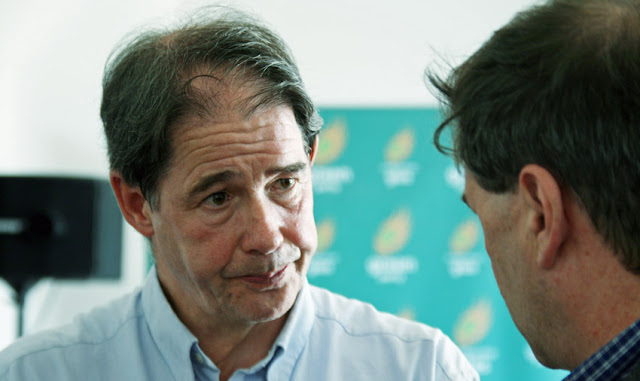 |
| Former Friends of the Earth chief Jonathan Porritt says we must accept a reduction of the historic proportion of GDP attributable to lighting and its associated energy requirements if we are to have an impact on greenhouse gas emissions. |
Delivering the inaugural annual lecture of the Worshipful Company of Lightmongers, he said: ‘We need to find ways of delivering increasingly sophisticated lighting services to the whole of humankind…in ways that cause considerably less impact, which probably needs less total economic activity.
‘Lighting is responsible for anywhere between 16 and 18 per cent of total electricity consumption in the world today, depending on how you do the calculations. So this is an absolutely massive part of the challenge. And although it’s rarely spoken about in those terms, people are beginning to understand that if we are going to make a difference to this story, we have to make a difference on lighting.’
Referring to the barrage of criticism from campaigners over the UK Government’s decision to approve a third runway at Heathrow Airport in London, he pointed out that aviation is responsible for 2 and 4 per cent of total global greenhouse gas emissions.
‘It’s relatively small in fact. When you compare lighting to these other big sectors, you can begin to see why it is people are focusing suddenly on the need to get lighting right.
‘What we know is that if you back right back before electricity to when people were using whale oil and tallow and candles, the contribution of the lighting industry as a whole has remained astonishingly constant over hundreds of years. It always contributes around 1.7 per cent of total GDP in any one year.
‘This rather amazing statistic was unearthed by Professor [Jeff] Tsao in the paper he wrote in 2010. And I quote: “New applications of increasingly efficient lighting technologies have consistently offset the energy efficiency gains from new lighting technologies almost exactly, leaving the portion proportion of global GDP attributable to lighting essentially unchanged for hundreds of years”.
‘So lighting’s always had this critical part in the economy of human societies at different points, at roughly 1.7 per cent of GDP.
’The problem is, we need to do something about that,’ he told a London audience of lighting executives. ‘I hope this isn’t going to upset people here but we kind of need to get that figure down. Because if we are to have a massive contribution from lighting to addressing this problem, we need to find ways of delivering increasingly sophisticated lighting services to the whole of humankind – not just the rich world – in ways that cause considerably less impact, which probably needs less total economic activity.’
However, he praised the lighting sector for its technological achievements, especially the development of the blue LED by Professor Shuji Nakamura and his team in the 1990s. Quoting the US Department of Energy, he said: ‘ “the widespread introduction of LEDs today will reduce electricity consumption by around 348 TWh by 2027, equal to the output of 44 large power plants, saving more that $30 billion at today’s power prices”. So you can see why this is going to have an impact on GDP. It takes $30 billion of economic activity out of the US economy, that translates through into the economic multipliers.
‘If the Indian government were to replicate the LED roll-out that it is currently undertaking in Pondicherry, it would reduce electricity demand by over 50 TWh and cut consumer bills by over $3 billion. These are just massive changes that are underway now.’
He also highlighted the president of Institute of Physics’ claim that the optimum use of LED lighting could reduce lighting’s share of the global electricity consumption in buildings from 19 per cent to 4 per cent. ‘That translates to the total electricity consumption of Europe.’
electricity demand reduction · energy efficient lighting · gdp · led GU10 · LED lamps · led lighting · led tubes · Novel Energy Lighting · power saving
The annual event, which is taking place at the Chaper House in Canterbury Cathedral, is one of the most important cultural and contemporary art events to be held in the South East of England.
The exhibition by international artist Bernardi Roig, working with the University of Creative Arts (Canterbury), uses life size sculptures made from polyester resin leaning against a wall and covered in 200 of Thorn’s PopPack 58W Battens. The stark white of the sculpture, combined with the powerful illumination from the fluorescent lamps, creates a dramatic contrast within the surrounding Gothic stained glass window space. Roig’s work explores themes such as human isolation, loneliness, the limits of knowledge and the body’s deterioration. The artist has created a tense relationship between figure and background, between rational comprehension and spiritual understanding, between artificial light and divine clarity.
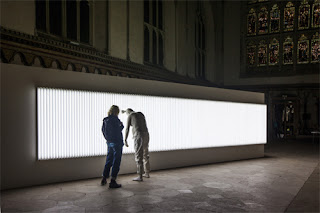 Emma Braso, Cultural Programme Curator at University for the Creative Arts, commented “We are delighted that Thorn has supported this event, the fluorescent lighting is a perfect choice of illumination for this exhibition as it creates a dramatic impact”.
Emma Braso, Cultural Programme Curator at University for the Creative Arts, commented “We are delighted that Thorn has supported this event, the fluorescent lighting is a perfect choice of illumination for this exhibition as it creates a dramatic impact”.
Thorn’s PopPack Batten incorporates a Tridonic PC T8 Pro ballast contained in a white stoved enamel outer to provide a colour rendering index of 80 and luminaire efficacy of 90 lm/w. The 1500mm luminaire is suitable for a wide range of applications, including unique exhibition displays such as the Sleepless Light Exercises.
church led · church lighting · led ligthting · led tubes · Novel Energy Lighting · poppack led · thorn led · thorn lighting · thorn poppack
14
School installs experimental lighting to improve grades
Comments off · Posted by admin in Uncategorized
An experimental human centric lighting scheme has been installed at Lindeborgskolan school in Malmo, Sweden, aimed at improving pupil performance.
The human centric system replaced a fluorescent lighting scheme, a change which pupils claim has improved their concentration, making them feel more alert throughout the school day.
The automatically changing light variation includes a period of intense rather blue light in the morning, to wake the pupils up, and a warmer light during other parts of the day.
Teachers are able to change the colour intensity of the lighting to create a calming or a stimulating atmosphere when necessary. The human centric scheme has also eradicated flicker.
The new lighting was funded by the Department of Internal Services in the hope of bringing Swedish schools firmly into the twenty first century.
You can find out more about the Malmo project by watching the video above. You can also learn more about the debate surrounding human centric lighting by reading our article: Are we experimenting on school children?
changing colour temeprature · controllable lighting · human centric lighting · led panels · led tubes · Novel Energy Lighting · school led · school lighting
A THIRD of Britain’s office workers hate their lighting, a study by the respected pollsters Ipsos has discovered.
Some 32 per cent of white-collar employees told the researchers that they were unhappy with the light intensity, with only a fifth were able to alter the light level.
The results are sure to bolster critics of the lit environment in the nation’s commercial workplaces, who have slammed the sector for a lack of creativity. Top lighting designer Paul Nulty, founder of Nulty+, tweeted: ‘Bad lighting effects workplace productivity. Who’d have thought!?’
UK offices still have a preponderance of so-called Category 2 lights – recessed, deeply-louvred fittings designed to minimise reflections on computer screens – which deliver a gloomy environment.
The study of over 12,000 workers across 17 countries showed that the UK workers are the least satisfied with their office ambience. The study appeared to add weight to the argument that local lighting control boosts employee engagement and satisfaction, as the biggest issue was a lack of control. Only 39 per cent of respondents say they can adjust the temperature, while a mere 21 per cent can alter the lighting.
The so-called Category 2 light fixture has long dominated the UK’s offices, but its deep louvres are no longer necessary to prevent reflections on computer screens. Picture: Andrew Malone
‘This could be seriously affecting the concentration, productivity and engagement levels of workers, with the study showing that a lack of flexibility and control over the physical work environment correlates with a lack of engagement’, the study said. In contrast, highly engaged employees are those that have the most flexibility over how and where they work.
The situation in the UK is likely to be influenced by the country’s dominance of open-plan design, with 49 per cent of workers based in this kind of space due to its cost-saving benefits. However, this can limit employees’ individual control over their environment.
Christine Congdon, director of Global Research Communication told Lux: ‘Our research has consistently shown that the most engaged workers are those who have autonomy over how and where they work, whether adjusting the temperature, lighting, or workspace to suit their needs. ‘When people feel like they have choice and control over various aspects of their physical work environment, it leads to greater satisfaction overall.
‘Everybody is different and personal preference will depend on an individual’s natural physiology, their mood on a particular day and the task they are working on. To cater to these constantly changing needs, employers should pay more attention to providing a range of working environments, including the ability to adjust workspace basics as required.’
The study was commissioned by office furniture manufacturer Steelcase.
Visit us at www.novelenergylighting.com to explore our range of office lighting products, including LED panels and LED tubes. Call us to discuss your needs: 0208-540-8287, or drop us an email: sales@novelenergylighting.com
Main picture copyright Ripton Scott 2016
commercial lighting · led panels · led tubes · Novel Energy Lighting · office compliant lighting · office led · office lighting · productivity lighting
 |
Elephants are causing serious headaches for farmers in India. |
 |
| Elephants have now started coming out of the forest throughout the year instead of only during harvest seasons. |
LED lighting is being inventively utilised in East India to prevent rampaging elephants from trampling farmer’s crops.
For months farmers in Odisha have been battling to prevent elephants from raiding vegetables, fruits and paddy. Miles of trenches and solar fencing have all failed to prevent the incursions, but now a newly installed low cost lighting system is showing signs of success.
Flashing LED lights suspended on bamboo poles have been installed at sixty metre intervals across forty-five acres of crops. The lights were placed so they would be at the elephant’s eye level, while being visible from a long distance.
Despite the fields being full of tomatoes, pumpkins and bananas, the elephants have opted to keep their distance from the illuminated crops.
‘The light system has been designed based on our field experience with elephants and their habits,’ Biswajit Mohanty, project director at the Wildlife Protection Society of India (WPSI) told The Hindu newspaper.
‘We knew that the elephants would be scared of flashing lights instead of fixed and powerful lights. We developed this design using low power LED bulbs used as strobes.’
The LED system was also used during the lucrative Indian mango season, which runs from April to June.
Hopefully the lights will be popular with farmers so that they can sleep peacefully instead of chasing elephants all night.
Biswajit Mohanty – The Wildlife Protection Society of India
‘I used to incur huge losses due to elephant herds entering my orchards and attacking mango trees,’ Odisha farmer Jugal Kishore Nayak told The Hindu. ‘But this year, the lighting system has kept the elephants at bay.’
The WPSI now plans to develop a prototype self-contained lighting unit, with an in-built solar charger, which will make the fixtures easier to maintain.
‘Hopefully the lights will be popular with farmers so that they can sleep peacefully instead of chasing elephants all night,’ Biswajit Mohanty concluded.
The Indian farmer’s elephant problem is much more serious than a few ravenous mammals stealing fruit and vegetables. Odisha has lost more than 700 elephants and 700 people during man-elephant conflicts since 2004. During the same period, elephants trampled ready-to-harvest crops across 90,000 acres of land.
The experiment assumes extra significance as elephants have now started coming out of the forest throughout the year instead of only during harvest seasons.
Visit www.novelenergylighting.com to purchase you elephant deterrent lighting today, or call Andy on 0208-540-8287 to discuss pachyderm prevention measures!
elephant deterrent · elephants · led in india · LED lamps · led lighting · led panels · led tubes · Novel Energy Lighting · pachyderm prevention
26
Are you ready for the upcoming halogen phase out?
Comments off · Posted by admin in LED, LED downlights, LED GU10, LED MR16 lamps, LED Spots
Don’t wait for the phase out, switch and save today with LED alternatives!
In order to reduce C02 emissions, the European regulation is being enforced to stop the manufacture of inefficient directional halogen lamps.
From September 1st 2016, manufacturers will no longer produce:
- Halogen lamps directional from
C & D classes - Related products are PAR, R50/R63/R80
- MR11 (low volt with below 4,000h)
- MR16 main volt: low volt with below 4,000h
Switch to LED alternatives to save energy, reduce C02 and save money. Novel Energy Lighting offers a full range of LED lamps, tubes, and fittings from various top quality brands. To see all our products please visit us at: www.novelenergylighting.com, or call us 0208-540-8287, email: sales@novelenergylighting.com
eu halogen ban · halogen phase-out · led GU10 · LED lamps · led lighting · led mr11 · led mr16 · led t8 · led tubes · Novel Energy Lighting
28
Government invests £5 million to help keep the lights on
Comments off · Posted by admin in LED, LED downlights, LED panels
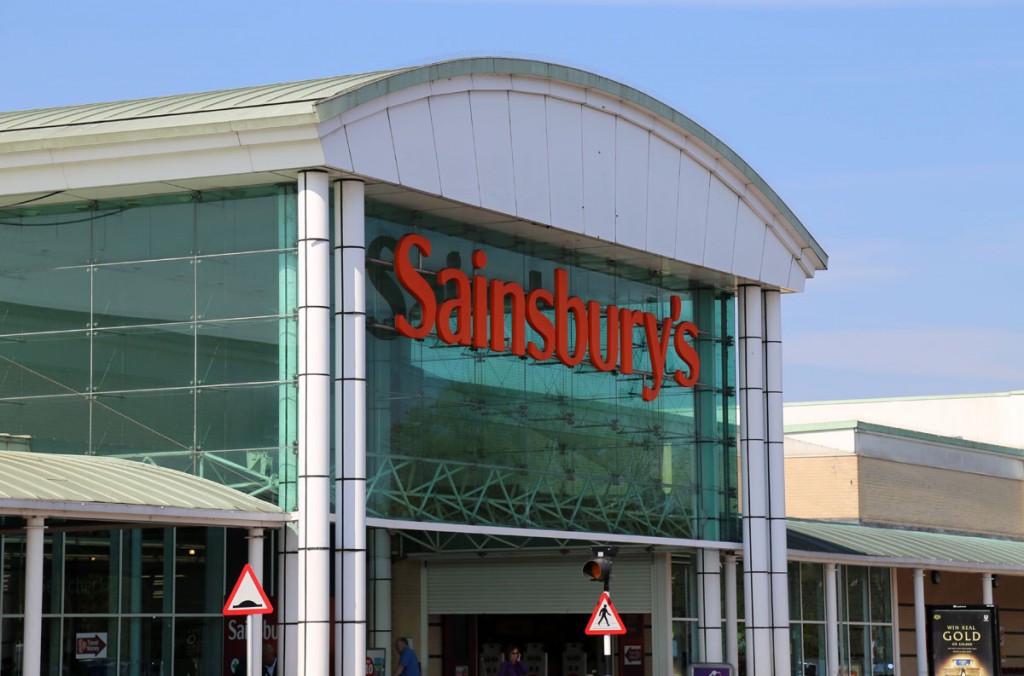
Sainsbury’s is one of a number of companies to bid for an Electricity Demand Reduction grant, as Whitehall eyes ways to keep the lights on in winter.
The Government is investing nearly £5 million to encourage leading UK firms such as Sainsbury’s, to install energy efficient lighting.
The money is part of an attempt by Whitehall to reduce peak time energy levels as fears rise that the National Grid will not be able to cope with electricity demands this winter, leading to nationwide blackouts.
A string of leading companies, including British Gas, Sainsbury’s, Sony and BAE Systems, have bid for funding in the second auction of the Electricity Demand Reduction (EDR) pilot.
Plumbing firm Wolseley UK received an EDR grant of £100k and is using the money to kit out its distribution centre with upgraded LED lighting.
The company claims that the new fixtures will reduce its electricity demand by 236,000 kWh, which is enough energy to power more than 300 homes.
Wolseley worked closely with Cloudfm on the maintenance work, a partnership that has also led to Wolseley’s head office in Leamington Spa being awarded a BREEAM “Excellent” rating.
The scheme works by encouraging consumers to provide capacity in the form of megawatts to help the UK meet its energy efficiency targets and reduce pressure on the National Grid. The pilot also reduces the energy bills of those involved.
The Government had originally allotted £6 million to the pilot, but a lack of uptake meant that not all the money was allocated.
This is the second time that an EDR auction has failed to reach its target, the first, held last year, saw only £1.28m out of a total of £10 million being snapped up.
edr · electricity demand reduction · energy reduction · LED downlights · LED lamps · led lighting · led panels · LED retrofit · led tubes · Novel Energy Lighting
The lighting industry is gearing up to launch a key weapon in the war on the deadly Zika virus – special LED lights.
Fred Maxik, the chief technology officer of Lighting Science, is exploring the possibility of constructing a special trap for the mosquito which carries the life-threatening infection.

Transmitted via a bite from the yellow fever mosquito, Zika is extremely serious for pregnant women, as there’s evidence it causes birth defects such as abnormally small heads. Experts now warn that they expect the Zika virus to spread to all countries in the Americas, including the Caribbean, except Chile and Canada.
Lighting Science – which uses special tuned lighting for applications such as water purification, turtle protection and space use – is developing a tuned light trap for the yellow fever mosquito. The company is already working with the US Department of Agriculture on its programme of light-based insect traps. With a little modification, it thinks it can develop one specially to help in the war on the Zika virus.
This is because different mosquitos are attracted to different wavelengths of light. By ‘tuning’ the light specifically at the yellow fever mosquito – or Aedes aegypti, to give it its scientific name – the light traps can be targeted.
‘There’s no one size fits all,’ Maxik told Fortune magazine this week. By testing the traps in the field, the company can work out exactly which spectral signature attracts and which repels the creatures. Special lights can then be developed to deter the mosquitoes from approaching buildings such as ante-natal clinics and hospitals in high-risk zones. ‘We’re trying to create light that’s useful for our own purposes.’
LED lamps · led lighting · led tubes · Novel Energy Lighting · tunable light · zika virus



